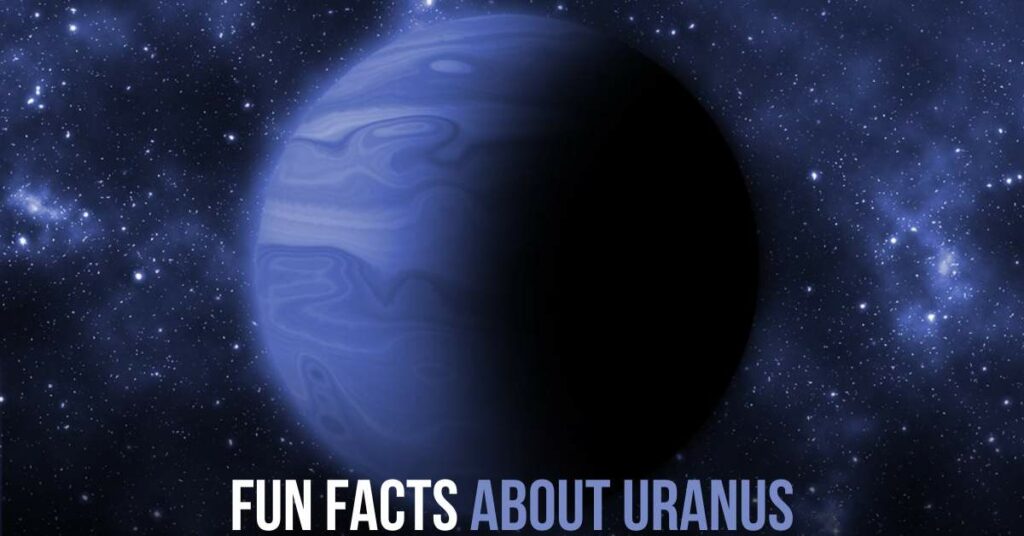Welcome to a fascinating journey through our solar system, where we’ll uncover some intriguing facts about Uranus, the enigmatic seventh planet. Unlike its more famous neighbors, Uranus has some unique characteristics that make it a captivating celestial body to explore. So, buckle up as we delve into the mysteries of this distant ice giant.
1. The Seventh Planet from the Sun
While Uranus might be the seventh planet from the Sun, it holds the distinction of being the first planet discovered in modern times. Ancient astronomers were well-acquainted with Mercury, Venus, Mars, Jupiter, and Saturn, but Uranus eluded them until the 18th century. English astronomer William Herschel spotted this distant world in 1781, adding a new member to our celestial family.
2. Named After the Sky God
Uranus bears a name, unlike its planetary siblings. Instead of being named after a Roman god, it was christened after Uranus, the Greek god of the sky and the son of Chaos. According to mythology, Uranus is the progenitor of many celestial beings, including Earth (Gaia), which happens to be his sister. In contrast, the rest of the planets in our solar system are named after Roman deities.
3. Almost Called “George’s Star”
Interestingly, Uranus could have had a very different name. When Herschel was asked to propose a name for his discovery, he suggested “Georgium Sidus” or “George’s Star” in honor of King George III of England. This royal name endured in Britain until 1850 when it was replaced by the universally accepted “Uranus.”
4. A Roller on Its Side
Uranus is unique among the planets due to its peculiar axial tilt. It’s often described as a “rolling planet” because its equator is inclined at a staggering 97 degrees to the plane of its orbit. This means Uranus appears to roll along its orbital path, and its rotation appears almost “sideways.” As a result, Uranus experiences extraordinarily long seasons and peculiar day-night patterns.
5. The Coldest Weather in the Solar System
While Neptune is farther from the Sun, Uranus boasts the coldest recorded temperatures in our solar system. Its average surface temperature hovers around a bone-chilling -224 degrees Celsius (-371 degrees Fahrenheit). The extreme cold is a consequence of the planet’s long polar nights, where some regions remain shrouded in darkness for over 40 years at a stretch.
6. A Hidden Dark Spot
Uranus may have a serene atmosphere compared to other gas giants, but it’s not devoid of intriguing features. In 2006, astronomers discovered the “Great Dark Spot” on Uranus, reminiscent of a similar phenomenon on Neptune. This colossal hurricane-like storm boasts wind speeds that can reach up to 200 meters per second, making it a dynamic and mysterious feature in the planet’s atmosphere.
7. The Unmistakable Stench of Rotten Eggs
In 2018, scientists made a startling discovery about Uranus’s upper atmosphere. They found that its clouds consist of frozen hydrogen sulfide, the same compound responsible for the foul smell of rotten eggs. This revelation provides insights into Uranus’s history, suggesting that it didn’t form in its current orbit but migrated there from a closer location to the Sun.
8. A Ringed Beauty
Uranus boasts an elegant system of rings, much like its sibling Saturn. However, its rings remained hidden from human observation until 1977 when they were serendipitously discovered. Currently, we know of 13 rings encircling this ice giant. Interestingly, two of these rings were only identified in 2005, prompting speculation about whether William Herschel, the discoverer of Uranus, had observed them.
9. Moons Named After Shakespearean Characters
Uranus has a diverse retinue of 27 known moons, each bearing the name of a character from the works of two renowned English poets: William Shakespeare and Alexander Pope. Some of these moon names include Titania from “A Midsummer Night’s Dream,” Prospero from “The Tempest,” and Cordelia from “King Lear.” These names lend an artistic and literary touch to Uranus’s celestial companions.
10. Magnetic Quirks
Uranus exhibits magnetic peculiarities that set it apart from other planets. Unlike Earth, where magnetic poles align closely with the planet’s center, Uranus’s magnetic poles are offset. The southern magnetic pole resides in the northern hemisphere, while the northern pole lies in the southern hemisphere. This anomaly suggests that Uranus’s magnetic field is generated in its outer layers, where significant matter flows occur, rather than originating from its core.
In conclusion, Uranus, the distant and enigmatic ice giant, continues to surprise us with its unique characteristics and intriguing mysteries. From its peculiar axial tilt to its unexpected weather and magnetic quirks, Uranus offers a glimpse into the complex dynamics of our solar system’s outer reaches. So, the next time you gaze up at the night sky, remember the hidden secrets of this distant celestial neighbor.
